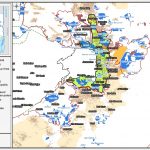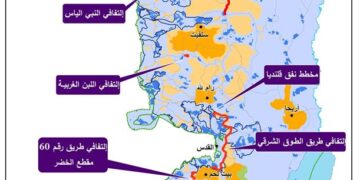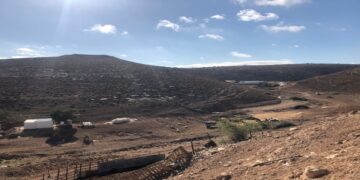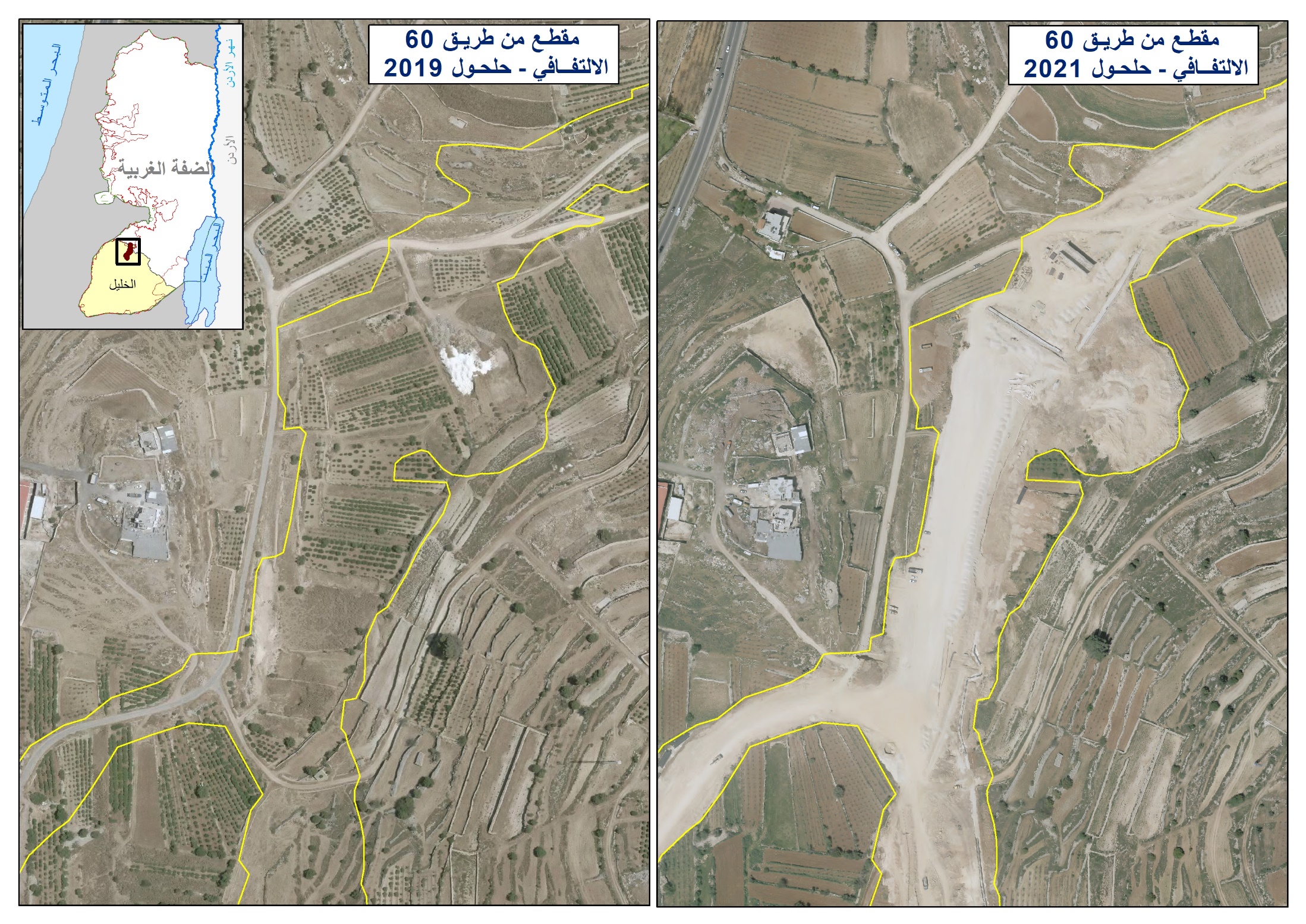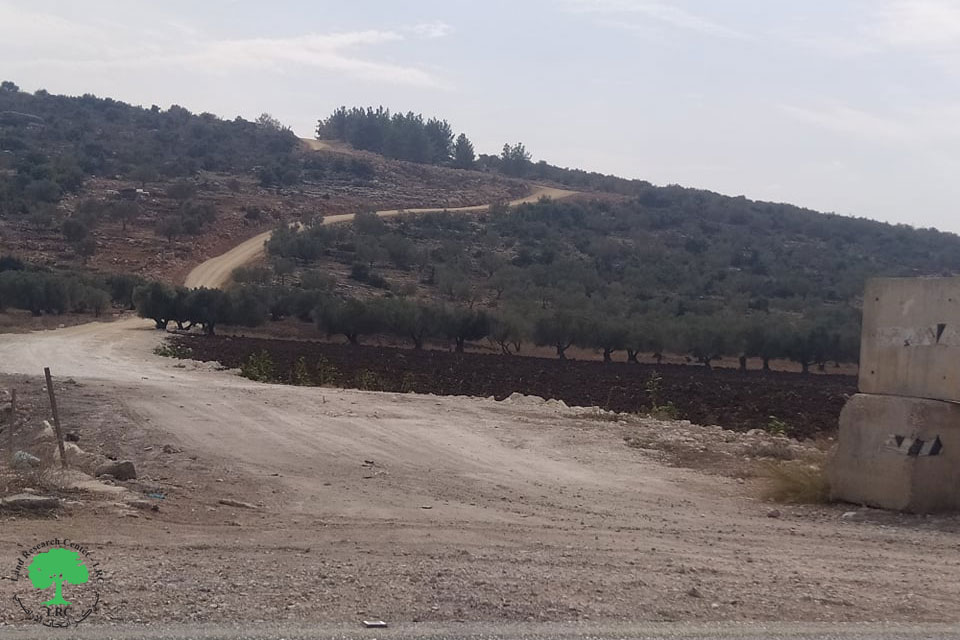As the world fights the spread of the coronavirus, and Israeli political parties enter yet another round of negotiations to form a government, Israel is wasting no efforts to impose more facts on the ground in order to consolidate its settlement enterprise on the occupied Palestinian territory.
On the 11th of March 2020, Israel’s occupation minister, Naftali Bennett, announced that Israel is currently planning for a new road in the occupied West Bank that has already been given the name “the sovereignty road.” The road is intended to serve Palestinians and divert their access of the “Israeli by-pass road No. 1 – originally constructed on occupied Palestinian land” – to a new road so that they won’t have to access roads that are shared with Israeli settlers; at the same time, the planned road will allow Israel to commence the building of the infamous settlement plan, known as “ E1 Plan[1]”, which states the construction of 3668 new settlement units and 2152 hotel rooms; in addition to an industrial zone, a water facility and a Police Station (already built and functioning in the area). The aforementioned plans hold numbers: Plan No. 420/4/7 – Plan No 420/4/10 – Plan No. 420/4/1 – Plan No 420/4/2 – Plan No 420/4/3 – and Plan No 420/4/9.
The E1 plan and the Israeli Segregation Wall plan around Jerusalem
Ïsrael plan of annexing the three major settlement blocs surrounding the city of Jerusalem
Bennet’s announcement of constructing a new road west of Maále Adumim settlements comes two weeks (on the 25th of February 2020) after the Israeli Prime Minister Netanyahu’s, gave orders to deposit plans for the construction of the E1 settlement plan in an attempt to create some kind of territorial contiguity in the area -connecting Maale Adumim settlement bloc with settlements inside the occupied city of Jerusalem-, while hindering the territorial contiguity and development of Palestinian communities in the area.
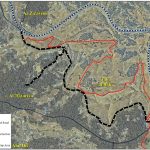 The planned road for Palestinians
The planned road for Palestinians
Bennett announcement was clear enough to show that Israel is heading towards creating another separation or “apartheid” road in east Jerusalem that will see Palestinians using roads of their own, separate from those used by Israeli settlers; changing Palestinian traffic on the Israeli bypass road No. 1 which passes by Maále Adumim settlement east of Jerusalem, to a new road that will pass through Palestinian villages, and leave the Israeli bypass road No. 1 for the explicit use of Israeli settlers, preventing unnecessary Israeli settlers’ friction with the Palestinian population.
The planned road will also allow Israel to continue building the Segregation wall around Maále Adumim settlement bloc and later annex it to Jerusalem. The Ma’ale Adumim settlement along with eight other settlements in the area constitutes what Israeli refers to “the Ma’ale Adumim settlement bloc” in east Jerusalem. It is the largest settlement bloc in the occupied Palestinian territory with a population of more than 48,000 Israeli settlers and occupies more than 72,000 dunums (72 km2) of confiscated Palestinian lands from Abu Dis, Ezariya, Isawiya, At Tur, and Anata towns.
Since the establishment of Ma’ale Adumim settlement and the nearby settlements, the consecutive Israeli Governments has invested significant resources in expanding and developing them; as a result of this investment, large tracts of Palestinian lands were illegally seized from the neighbouring Palestinian communities. Today, these settlements constitute a great danger on the neighbouring Palestinian communities because they continue to expand on the expense of the neighbouring Palestinian lands, and threaten their existence in the near future.
Furthermore, in 2002, Israel commenced the construction of the segregation wall in the occupied Palestinian territory with great focus on Jerusalem city. Accordingly, the latest update route of the segregation wall showed that the wall is set to annex three major Israeli settlement blocs surrounding the city of Jerusalem, including Ma’ale Adumim settlement bloc, while excluding 12 Palestinian communities nearby (pop +150,000) from the city’s municipal boundaries, to become on the eastern side of the wall. The planned road will enable Israel to continue constructing the wall around the Maále Adumim settlement bloc and further complete the isolation of the city of Jerusalem from the rest of the Palestinian communities surrounding it.
To conclude;
Israel’s determination to continue its settlement policy in the occupied Palestinian territory and the construction of new roads and settlements at the expense of the Palestinian lands violates International humanitarian law, International conventions and various United Nations resolutions.
According to Article 53 of the Fourth Geneva Convention Israel is prohibited to demolish Palestinian houses under which provides that: “Any destruction by the Occupying Power of real or personal property belonging individually or collectively to private persons, or to the State, or to other public authorities, or to social or cooperative organizations, is prohibited, except where such destruction is rendered absolutely necessary by military operations”;.
Under the same convention, Article 147 provides that: ”extensive destruction and appropriation of property, not justified by military necessity and carried out unlawfully and wantonly”; is a grave breach of international law.
Moreover, the International Convention on the Elimination of All Forms of Racial Discrimination (1965) Article 5 provides that: ”States; or Parties must undertake to prohibit and eliminate racial discrimination in all of its forms and to guarantee the right of everyone, without distinction as to race, color, or national or ethnic origin, to equality before the law, notably in the enjoyment of the following rights: (e) in particular … (iii) the right to housing”;.
On the other hand, Israel doesn’t hesitate to punish any Palestinian who builds without permit in areas classified as ”C”; or in occupied East Jerusalem.
[1] In the late nineties, the Israeli Government unveiled plans to expand the Ma’ale Adumim settlement westwards. The expansion plan was referred to as the “E1 Plan”. This construction will come on more than 13,000 dunums of Palestinian land in East Jerusalem which belong to Al Issawiya, At Tur, Al Ezariyeh, Abu Dis and Anata communities.
Prepared by:
The Applied Research Institute – Jerusalem



